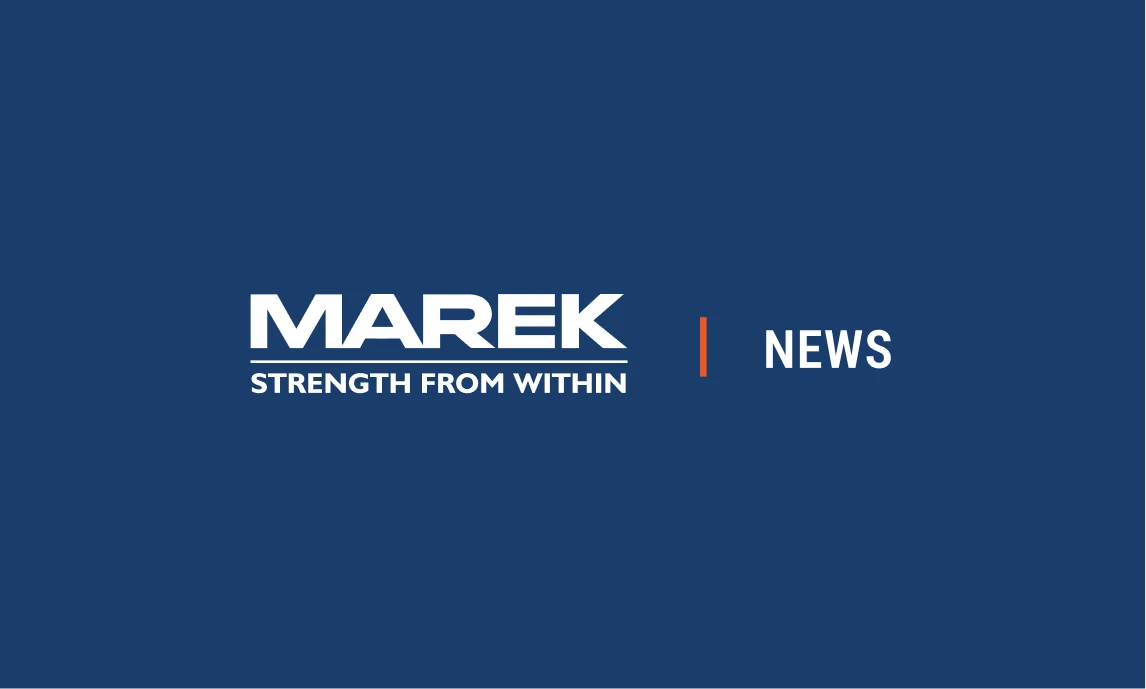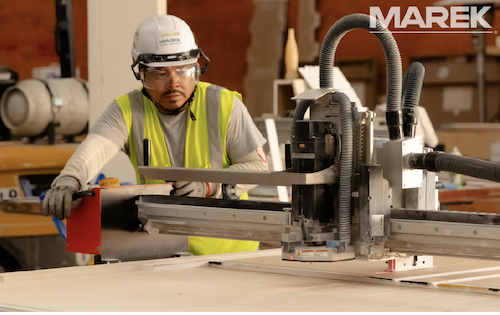
‘I Was Too Big a Target’ — ICE’s Audit of Marek Exposes Our Irrational Immigration PoliciesnMarek Brothersnnnn
 The following article was authored by Loren C. Steffy and originally published in the Houston Chronicle.
The following article was authored by Loren C. Steffy and originally published in the Houston Chronicle.
n
On a Monday morning in 2009, the phone chirped on Stan Marek’s desk, and he snapped up the receiver. On the other end, the front-desk receptionist sounded nervous. Half a dozen men in dark windbreakers had filed into the lobby moments earlier and demanded to see the owner of the company. They looked like FBI agents, she said. The company Stan runs with his two cousins was founded by their fathers, and this family business has prided itself on following the rules for more than 80 years. He knew the men in the lobby weren’t from the FBI, but he also knew they were from the federal government, and he wouldn’t like what they were going to say.
n
Stan oversaw a construction enterprise, known simply by his family name, Marek, that stretched across the Southwest and employed more than 2,000 people. He was proud of the family company, which he and his cousins continued to build. He wondered if the men in the windbreakers waiting in his lobby could appreciate the sacrifices three generations of Mareks had made to get to this point.
n
As he walked across the expansive, two-story lobby, he could see the agents waiting at the other end. On the back of their jackets, in big yellow letters, was one word: ICE — the acronym for Immigration and Customs Enforcement. As Stan approached the agents, he knew this was the moment he and a great many other employers in Houston had been dreading.
n
ICE was formed as a division of the Department of Homeland Security in the wake of the Sept. 11, 2001, terrorist attacks. The assaults on U.S. soil reshaped a host of government programs and created several new federal agencies. ICE combined the old U.S. Customs Service and the U.S. Immigration and Naturalization Service; Congress infused it with a unique combination of civil and criminal authority.
n
As Stan walked toward them, the ICE agents turned to face him. The administration of President Barack Obama, who took office in 2009, had promised a new “get tough” policy on illegal immigration. It focused less on rounding up undocumented workers and instead directed government enforcement efforts at the companies that employed them. Except for agriculture, no industry in Texas employed more undocumented workers than the construction business, and Marek was one of the biggest specialty subcontractors in town. It got its start hanging drywall and later expanded into carpentry, flooring and painting — basically any interior construction work that a developer required. Marek’s size may have put it on ICE’s radar for one of the agency’s first workplace audits in Houston, or it may have been Stan’s frequent calls to senators, representatives and Obama administration officials stressing the need for immigration reform. He frequently wrote opinion essays for the Houston Chronicle and other publications, making his case in the media as well as the backrooms, and he was often quoted by reporters in news stories.
n
“Everybody told me I was too big of a target,” Stan recalled.
n
Other employers who publicly called for immigration reform felt that ICE targeted them unfairly for audits, too, said Jacob Monty, a lawyer in Houston who works with companies on immigration issues.
n
“Employers that speak out, they sometimes get retaliated against by ICE,” Monty said. “And the public often misunderstands and thinks ‘Oh, they just want cheap labor.’ I know Stan, and that’s not what he wants.”
n
Nevertheless, Stan, a lifelong Republican, now found himself targeted by a Democratic administration, and he couldn’t help but wonder if his vocal support for immigration reform was to blame for what he knew was about to happen. As he shook the lead agent’s hand, the man said: “Mr. Marek, we’re going to do an I-9 audit.” I-9s are officially known as Employment Eligibility Verification forms. Employers are supposed to complete one for each worker, verifying the person’s identity and eligibility to work in the United States. ICE wanted to audit Marek’s records to see if the company had any employees who were in the country illegally.
n
Stan felt a lump rise in his throat. Marek tried to confirm the citizenship of workers, but it wasn’t as easy as it sounded. By law, employees could provide as many as 32 different kinds of identification, and it was difficult to assess the accuracy of each. Besides, the most common form of ID, the Social Security card, is among the easiest to forge. The agent said Stan had 72 hours to get the information together, then turned and headed for the door.
n
ICE wanted I-9s going back three years, which meant producing some 3,000 documents. The agents also wanted to see the IDs each worker had presented at the time they were hired. The Social Security card or other identification had to appear authentic — Marek couldn’t be expected to detect a good forgery, but the card had to have the correct numbers in the proper configurations, and it had to look like a real Social Security card. Marek used an electronic government system known as E-Verify to confirm its employees’ immigration status. E-Verify, though, wasn’t fool-proof. If workers had what appeared to be a valid ID, it would pass the E-Verify check. Employers such as Marek could follow all the rules and still wind up hiring undocumented workers. At the same time, employers who knowingly hired an undocumented worker could face fines or even jail time.
n
The ICE agents returned with the results of their audit a few months later. All of the I-9s had been filled out correctly, but ICE had found that about 200 workers had identification that didn’t match Social Security Administration records. If the workers couldn’t resolve the discrepancy in 90 days, Stan would have to fire them.
n
Marek is the sort of business that values employee longevity. It routinely holds company rallies in the two-story lobby where it honors longtime employees for their service: Tenures of 30 to 40 years are common. Stan knew each of the 200 workers, and he met with them individually to tell them about the ICE audit. Some had been with him for decades. They owned homes and had raised families in Houston. Marek provided them with health benefits and 401(k) retirement plans, and it paid their payroll taxes. But most of the 200, it turned out, were in the U.S. illegally.
n
Stan Marek sees himself as a champion of the working man. In an era in which more and more Americans earn a living by sitting in front of a computer screen, he still believes that people who work with their hands and use tools to make things should be able to earn a middle-class income. From the time of its founding, Marek has relied on first- and second-generation immigrants from a wide range of countries.
n
Back then, the traditional employment model in construction started with the general contractor, who would oversee a building project. The general contractor hired subcontractors, such as Marek, who had a workforce of employees who received hourly pay, overtime, benefits, workers’ compensation insurance and job training. The subcontractor paid payroll taxes and provided I-9s on all its workers.
n
In the past three decades, however, the model has changed. Fewer subcontractors have their own workers. Instead, they hire laborers they treat as independent contractors and pay them for piecework. In the drywall business, for example, these independent workers are paid by foot of wallboard hung, not by the hour. They receive no overtime, no benefits, no workers’ compensation insurance and no employer-funded training. They pay no taxes, have no insurance if they’re injured on the job and essentially have no career path. They will never be promoted to a supervisor position because those jobs are held by the subcontractor who hired them. For many immigrant workers here illegally, this is the only employment option. The arrangement has created a system that hurts the workers, leads to more accidents, mistakes and shoddy workmanship and ultimately undermines the industry’s future.
n
Stan felt badly for the workers he dismissed. What would happen to them? Would they be deported, forced to return to a country many of them hadn’t seen in decades? How would they provide for their families? Some had children who were U.S. citizens. By firing them, had he set in motion events that would tear families apart?
n
Even though Stan had to let them go, many of the workers remained loyal to him and stayed in touch. None of them were deported. Instead, they found other jobs. After all, these were skilled laborers who had been trained by Marek, which had a reputation for quality. They knew how to do the job right. The companies that hired them, though, did things differently. In most cases, the new employers paid $5 an hour less than Marek paid and offered no benefits.
n
The turn of events enraged Stan. On a purely business level, the employees he’d nurtured and trained were now competing against him at a lower cost. At the same time, these workers were more likely to become a greater burden on society than when they had worked for him. And the companies who hired them were rewarded for perpetuating a shadow economy created by decades of misguided immigration policy. Stan had witnessed the slow erosion of his part of the construction industry from one that offered careers to one that offered essentially day labor. He knew the industry couldn’t continue on this path without paying a price in lost quality and compromised safety.
n
Far from silencing him, Stan’s encounter with ICE made him even more determined to change immigration policy. In the years since, the political impasse around immigration reform has frustrated him, but he continues to advocate for a policy known as ID and Tax, that would allow undocumented workers to be hired legally and require employers to pay taxes. Workers would have to pass a background check. The policy would be similar to the Deferred Action for Childhood Arrivals, only it would apply to adults. It would allow workers to come out of the shadows, and it would allow the country to reap the full economic benefits of their contributions. It wouldn’t be the full-scale reform he has advocated for years, but it would be a good first step toward improving the lives of workers, providing employers with the labor force they desperately need and boosting the overall economy.
n
Steffy, a former business columnist for the Houston Chronicle, is the executive producer of the Rational Middle of Immigration video series and the author of five nonfiction books.
n
n n


